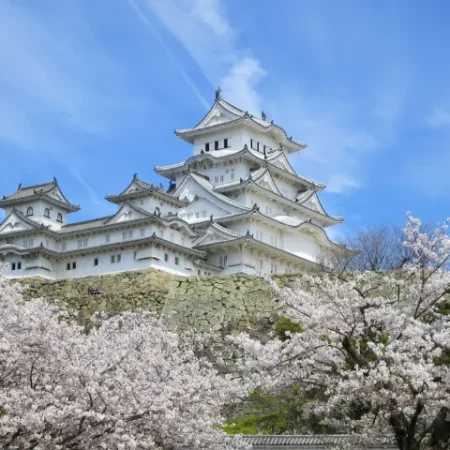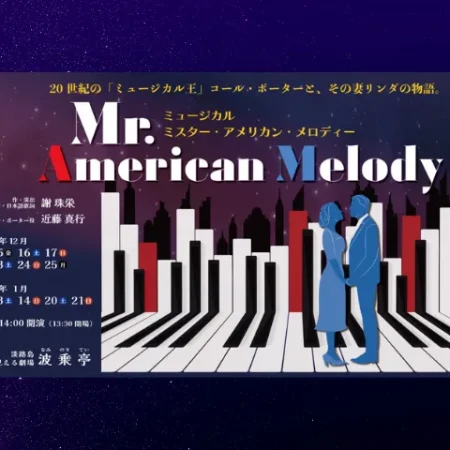Japan’s famous four seasons are all unique and come with much variety. So prepare to embark on a journey through Japan’s seasons, where nature puts on a jaw-dropping spectacle, leaving you breathless in spring, enchanted in summer, awe-inspired in autumn, and rejuvenated in winter.
Table of Contents
Spring (March to May)

Temperature: Spring starts with cool temperatures around 5-15°C (41-59°F) and gradually warms up to 15-20°C (59-68°F).
Highlights: Spring is famous for cherry blossoms (sakura). The blooming period varies depending on the region but generally occurs sometime between late March and early May. Spring is a pleasant time to visit with mild temperatures, beautiful landscapes, and various festivals.
Preparation: Pack lightweight and layered clothing, including a light jacket or sweater for cooler mornings and evenings. Comfortable walking shoes are recommended for exploring parks and gardens.
Cherry Blossom Season

Japan’s cherry blossom season, known as “sakura,” is a magical time when the country’s landscapes are adorned with stunning pink and white flowers. This fleeting beauty attracts visitors from around the world to immerse themselves in the country’s natural beauty and rich cultural traditions. By planning your visit during the peak bloom period, exploring iconic spots, joining hanami gatherings, and embracing local festivities, you’ll create lasting memories of this enchanting season.
The cherry blossom season typically occurs between late March and early May, although the exact timing varies depending on the region and weather conditions. Major cities like Tokyo, Kyoto, and Osaka usually experience blooming around late March to early April. Hokkaido in the north sees cherry blossoms later, usually in late April to early May. Research the cherry blossom forecast (“sakura-zensen“) for the year and plan your visit accordingly.
Embrace the centuries-old tradition of hanami, which involves gathering under cherry trees to appreciate their beauty. Pack a picnic and join locals and fellow travelers in parks, gardens, and riversides for a memorable hanami experience.
Summer (June to August)

Temperature: Summers in Japan are hot and humid, with temperatures ranging from 25-35°C (77-95°F) and sometimes higher, especially in urban areas.
Highlights: Summer brings vibrant festivals, fireworks displays (hanabi), and lively street events. It’s an excellent time to explore Japan’s coastal regions and enjoy outdoor activities such as hiking and beach trips.
Preparation: Light, breathable clothing, such as cotton or moisture-wicking fabrics, is essential to combat the heat and humidity. Sunscreen, hats, and insect repellent are also recommended. Stay hydrated and take breaks in air-conditioned spaces when needed.
Rainy season (June)

Let’s not forget Japan’s “fifth” season: the rainy season, also known as tsuyu or baiu. The rainy season in Japan typically occurs in June and a part of July. Its characteristic features are frequent rain showers (light and heavy) sometimes accompanied by thunderstorms. The rainy season is also known for its high humidity, which can make the weather feel hotter and more uncomfortable. The duration of the rainy season can vary by region, but it generally lasts from a few weeks to a month.
It is always wise to carry a compact and sturdy umbrella with you. Alternatively, you can opt for a lightweight raincoat or poncho but those tend to get too hot in the already humid climate.
Autumn (September to November)

Temperature: Autumn starts with warm temperatures around 20-25°C (68-77°F) and gradually cools down to 10-20°C (50-68°F).
Highlights: Autumn is known for its stunning fall foliage (koyo). The leaves change color, painting the landscapes in vibrant shades of red, orange, and yellow. It’s a popular season for hiking, visiting gardens, and enjoying seasonal delicacies.
Preparation: Layered clothing is ideal as temperatures can vary throughout the day. Bring a light jacket or sweater for cooler evenings. Comfortable walking shoes are recommended for outdoor activities and exploring nature.
Winter(December to February)

Temperature: Winters in Japan vary across regions, but average temperatures range from 0-10°C (32-50°F) in most areas. Northern regions and mountainous areas experience colder temperatures and snowfall.
Highlights: Winter offers unique experiences such as winter illuminations, hot springs (onsen) to warm up in, and winter sports in popular ski resorts like Hokkaido and Nagano.
Preparation: Bundle up with warm winter clothing, including a heavy coat, gloves, hat, scarf, and sturdy footwear suitable for icy or snowy conditions. Layering is important when visiting Northern part or mountain areas. Japanese houses lack insulation and usually the only source of heating is the air conditioner, so warm clothes for indoors are also important.















